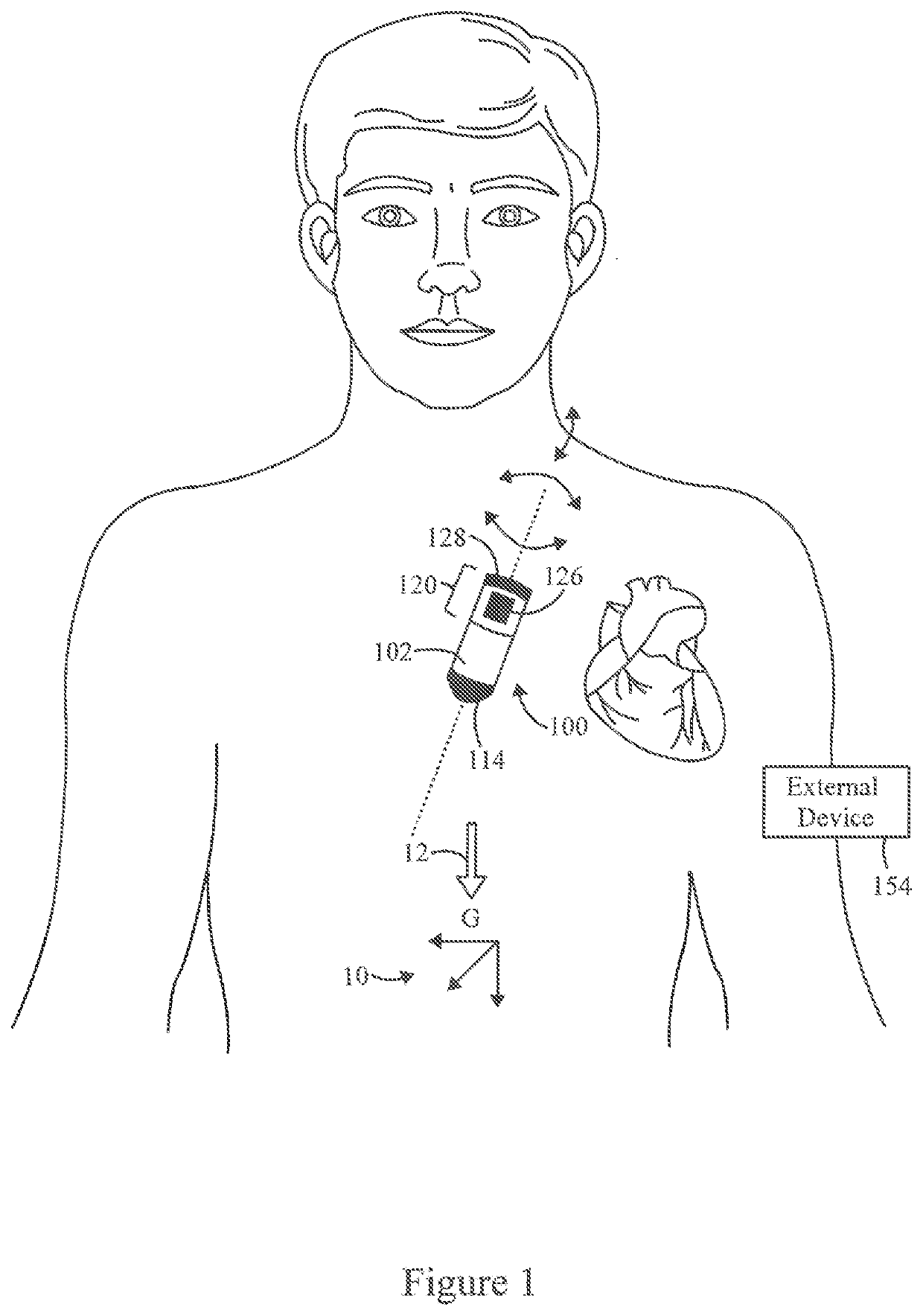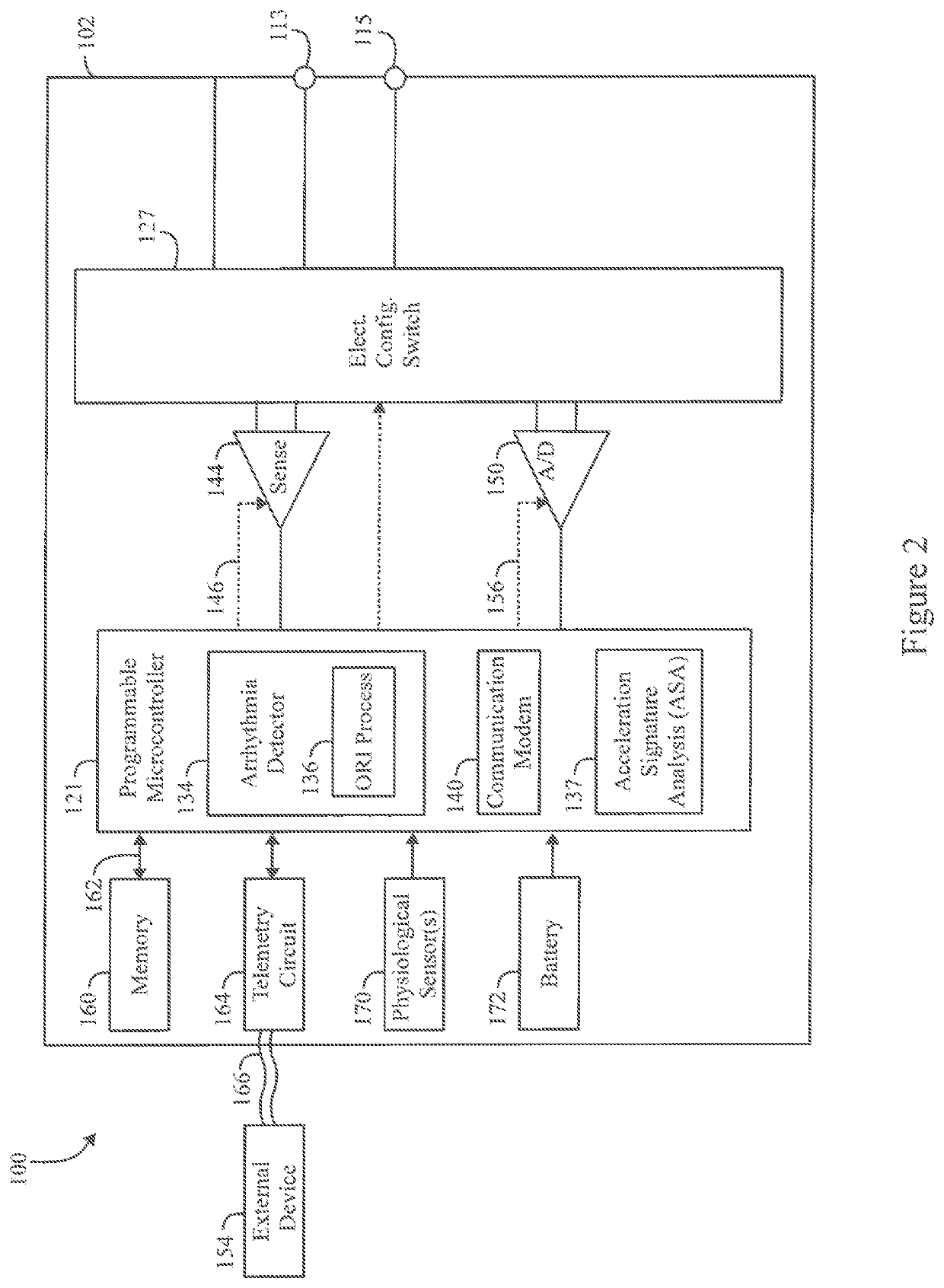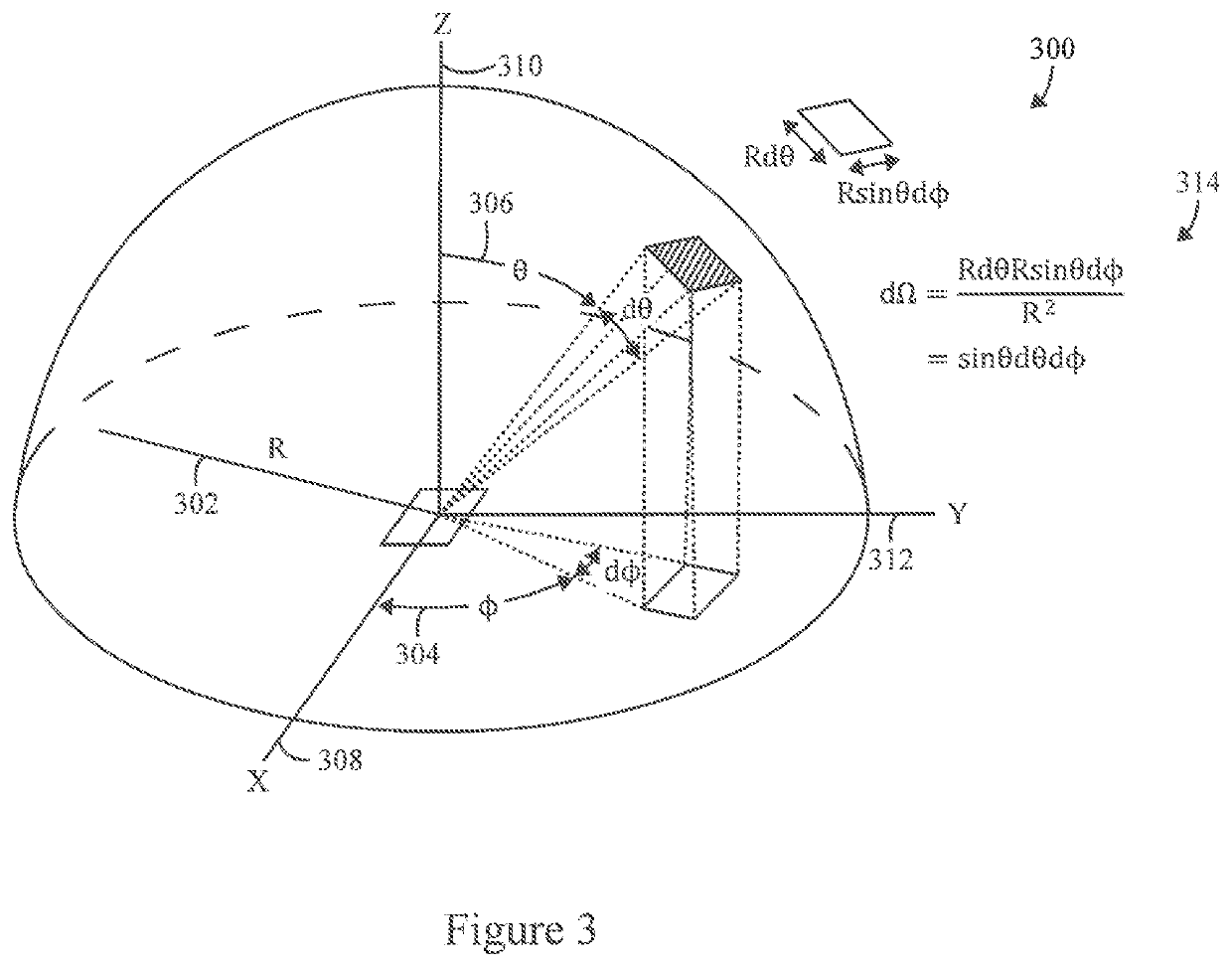Implantable medical device utilizing posture and heart sounds and method of using same
a medical device and posture technology, applied in the field of implantable medical devices, can solve problems such as false arrhythmias and devices that inappropriately detect heart signals
- Summary
- Abstract
- Description
- Claims
- Application Information
AI Technical Summary
Benefits of technology
Problems solved by technology
Method used
Image
Examples
Embodiment Construction
[0025]The terms “state” and “patient state” refer to activity states of a patient, including a stationary state, rest state, exercise state, walking state, and the like.
[0026]The terms “posture” and “patient posture” refer to posture positions of a patient, including a standing posture, sitting posture, supine posture, prone posture, horizontal side posture (e.g., laying on one's side) and the like.
[0027]The term “IMD location” refers to a position of an IMD, with respect to a reference position, and an orientation of the IMD with respect to a reference orientation. The reference position and orientation may be relative to a global coordinate system. By way of example, an IMD may translationally drift along one or more linear axis (e.g., X, Y and Z directions) from the reference position. Additionally or alternatively, the IMD may rotationally drift along one or more rotational axis (e.g., pitch, yaw and roll directions) from the reference orientation.
[0028]The terms “cardiac activi...
PUM
 Login to View More
Login to View More Abstract
Description
Claims
Application Information
 Login to View More
Login to View More - R&D
- Intellectual Property
- Life Sciences
- Materials
- Tech Scout
- Unparalleled Data Quality
- Higher Quality Content
- 60% Fewer Hallucinations
Browse by: Latest US Patents, China's latest patents, Technical Efficacy Thesaurus, Application Domain, Technology Topic, Popular Technical Reports.
© 2025 PatSnap. All rights reserved.Legal|Privacy policy|Modern Slavery Act Transparency Statement|Sitemap|About US| Contact US: help@patsnap.com



